Below is Part 2 of a three part essay (Part 1 is available here) I will be presenting at the 2012 Southwest Texas Popular Culture Association meetings in Albuquerque, New Mexico on February 9th. I will be presenting alongside several other scholars for a series of panels titled “The Apocalypse in Popular Culture.” A (much) earlier version of this paper can be found on the Sociological Images sister blog. Part 2 discusses the role of George Romero’s “flesh eaters” and the use of zombie films for social and political criticism between the late 60s and the mid 90s.
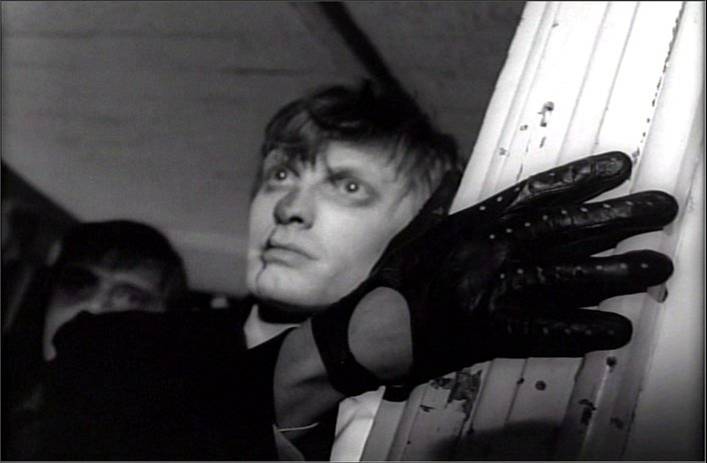
Romero’s 1968 classic, Night of the Living Dead, revolutionized the zombie metaphor. His “flesh eaters” have since become a staple of the genre and the social criticism laced within his early films have become a tradition in subsequent zombie films. Prior to Romero’s take on the zombie genre, zombies largely reflected the spirit of the times in which these films were made. Hence, the fears of racial miscegenation found in White Zombie (1932) and the fears of mind control found in Invisible Invaders (1952). However, Romero changed these trends when he made the zombie into something more than simply an automaton of mind control or voodoo mysticism; Romero introduced the “flesh-eater” into the zombie lexicon, pushing the genre further into the macabre and raising the possibility of a politicized zombie figure.
In fact Night of the Living Dead was created as a critique of the violence and devastation of Vietnam, with the dead returning to life as a result of radiation emitted from a government “Venus probe” sent to space. In addition, Romero made his zombies into a form of contagion: A single bite from a zombie will similarly kill and turn one into a zombie, thereby playing into fears of loved ones and strangers turning on one another. Since Romero’s film, the zombie has usually been associated with cannibal corpses that have risen from the grave to devour the living.
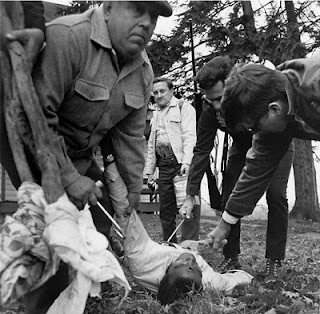
What is interesting to note about Romero’s film is its not-so-subtle use of race relations to depict the tensions of the Civil Rights era. Although Romero himself has stated that his casting of a Black man as the lead role had nothing to do with race, the impact was felt by audiences, who saw the film as ahead of its time. To make this allegory all the more palpable, Romero included still photography at the end of the film, in which militant white police officers drag the corpse of Duane, the lead character, by meathooks, accompanied by canines and armed civilians. These photos, shocking in their graphic violence, are reminiscent of white lynchmobs in the southern United States.
Romero took his social criticism one step further in his second zombie film, Dawn of the Dead (1978). In this film, protagonists bunker down in a shopping mall as zombies invade from outside. The images of zombies mindlessly walking, groping, and drooling over consumer goods provides a stark image of the cult of consumerism and American capitalism.
Similarly, the Italian zombie horror film Let Sleeping Corpses Lie (1974) reflects fears of environmental degradation and pollution. In this film, the zombie epidemic is caused by an experimental pest-control machine, which sends radio waves into the ground. Although it solves the local pest problem for farmers, it also reanimates the dead in a nearby cemetery. Once again we see the fears of scientific progress and environmental degradation leading to the zombie apocalypse.
Finally, The Plague of the Zombies (1966) captures themes of colonialism, tyranny, and proletariat exploitation. Set in the mid 1800s, a mysterious plague caused by voodoo magic leads the rural proletariat into a zombie revolution, eventually overtaking their corrupt patriarch and devouring him.
In short, the films of the 1970s became extremely political, as the zombie became a metaphor for various social anxieties that were most salient at this time, including environmental degradation, science and technology, rising inequality, energy crises, and consumer culture.
With the 1980s, the zombie turned into a comedic figure. The films became more formulaic and less dramatic, mainly as a result of low-budget production houses capitalizing on the success of early zombie films. These exploitation films revolved around ever-increasing levels of gore and nudity in order to attract young audiences with shock value. Films like Return of the Living Dead (1985), Dead Alive (1992), and Redneck Zombies (1989) capture this era of Grindhouse cinema.
Nonetheless, the zombie films of this era still contain social commentary. For instance, themes of drug abuse and teen promiscuity feature prominently in these films, mirroring the social context of the 1980s, particularly Reagan’s “War on Drugs” and the AIDS epidemic. Similarly, Romero’s third zombie installment, Day of the Dead (1985), is credited as a criticism of Cold War international relations and the U.S. military-industrial complex.
As we can see from the examples above, Romero successfully turned the zombie from brainless automaton into a premier source of social and cultural criticism. The cannibalistic nature of his “flesh eaters” and the precedents he set for the genre helped to transform the zombie into powerful figure for social commentary. Next week, I will cover Part 3: The Zombie Renaissance and conclude with some theory signifying the importance of the zombie as metaphor.

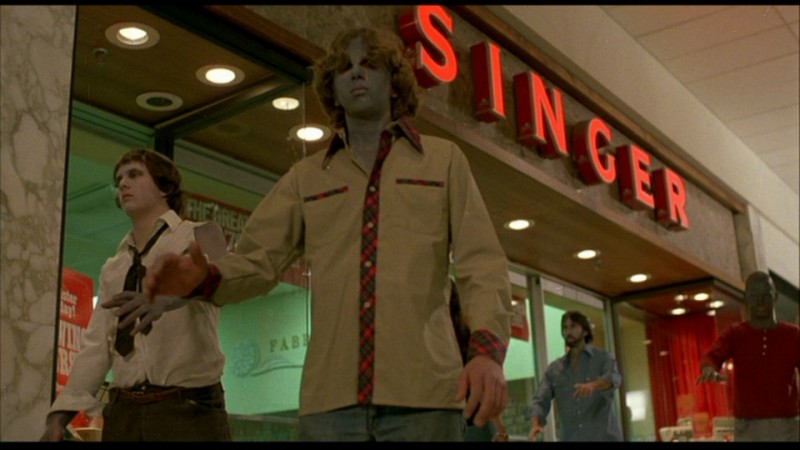

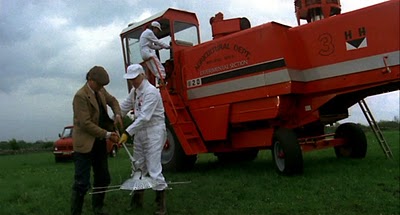
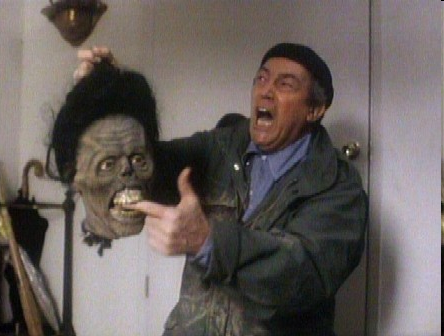
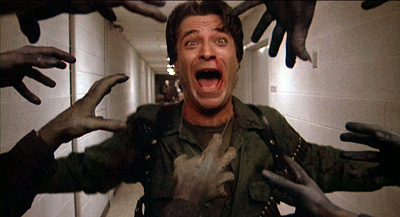
Comments 8
Jonas — February 6, 2012
I'm guessing you've seen Dead Set but think it perhaps should be mentioned in this context. Not really a "great" movie but I truly love the ending.
Anyway, thanks for a great blog.
The Zombie in Film (Part 2: Romero & the Politicized Zombie ... | Zombie Mania | Scoop.it — February 7, 2012
[...] background-position: 50% 0px; background-color:#222222; background-repeat : no-repeat; } thesocietypages.org - Today, 4:59 [...]
The Zombie in Film (Part 3: The Zombie Renaissance) » Cyborgology — February 16, 2012
[...] seconds ago at 01:05 pm Below is Part 3 of a three part essay (Part 1 is available here; Part 2 is available here) I will be presenting at the 2012 Southwest Texas Popular Culture Association meetings in [...]
The Zombie in Film (Part 2: Romero & the Politicized Zombie ... | riding the maelstrom — January 3, 2013
[...] the genre and the social criticism laced within his early films have become a tradition in …Via thesocietypages.org This entry was posted in Uncategorized, Zombies and tagged zombie by andromeda. Bookmark the [...]
In the Flesh (Series 2): Zombies get political (spoiler free) | Abbie watches stuff — May 16, 2014
[…] Romero’s ‘Night of the Living Dead’ is famously said to be an allegory about both racism and also communism, while the plethora of vampire movies in the 80s and 90s are reflective of […]
Zombies and Red Lipstick | BostonZombie.com — July 9, 2014
[…] An awesome articulate article on the history of zombies and the use of the zombie as a metaphor for various social anxieties and degradation in society.http://thesocietypages.org/cyborgology/2012/02/06/the-zombie-in-film-part-2-romero-the-politicized-z… […]
Reconsidering Quarantine in Invasion Narratives | Alluvium — February 27, 2015
[…] Night of the Living Dead (1968) and subsequent Living Dead (1968-2010) films – described by Dave Strohecker as ‘a form of contagion: A single bite from a zombie will kill and turn one into a zombie […]